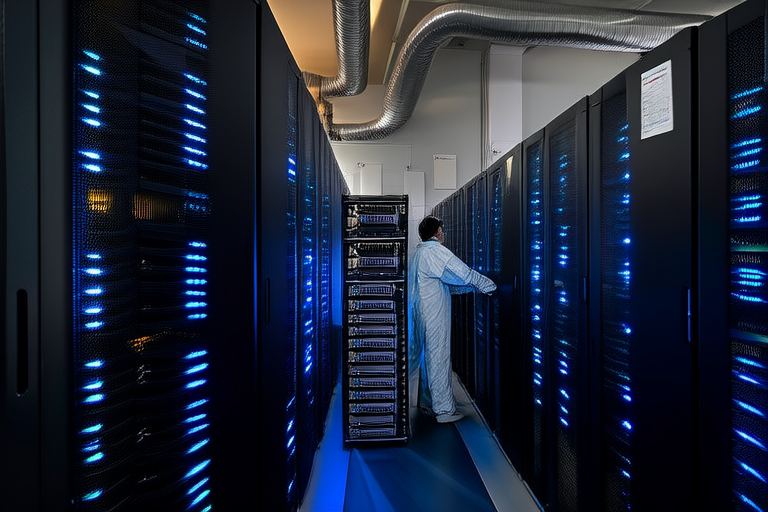“`html
The Intersection of Cloud Computing and Edge Computing: What You Need to Know
Introduction
In today’s rapidly evolving technological landscape, cloud computing and edge computing have emerged as two pivotal forces shaping the future of data processing and storage. While cloud computing has been around for decades, edge computing is a relatively new concept that addresses some of the limitations of traditional cloud-based systems. The intersection of these two technologies promises significant advancements in efficiency, performance, and scalability. This article explores the significance of combining cloud and edge computing, highlighting their individual strengths and how they complement each other.
Understanding Cloud Computing
Definition and Primary Functions
Cloud computing refers to the delivery of computing services—such as servers, storage, databases, networking, software, analytics, and intelligence—over the Internet (“the cloud”). These services offer companies flexibility and cost savings by eliminating the need for on-premises hardware and IT staff. Cloud computing enables users to access resources and information via the internet, with data stored on remote servers managed by third-party providers.
Evolving Over Time
Cloud computing has come a long way since its inception. Initially, it was primarily used for storing and managing data remotely. However, over time, it has expanded to include more complex applications such as machine learning, artificial intelligence, and big data analytics. The evolution of cloud computing has been driven by advancements in technology, increasing demand for scalable solutions, and the growing need for secure and reliable data storage.
Benefits and Challenges
The primary benefits of cloud computing include cost-efficiency, scalability, and ease of access. By outsourcing IT infrastructure to cloud service providers, businesses can reduce capital expenditure and focus on core operations. Additionally, cloud computing offers greater flexibility, allowing organizations to scale up or down based on demand.
However, there are also challenges associated with cloud computing, such as data security concerns, dependency on internet connectivity, and potential vendor lock-in. Ensuring robust security measures and maintaining reliable network connections are crucial for effective cloud adoption.
Understanding Edge Computing
Definition and Primary Functions
Edge computing is a distributed computing paradigm that brings computation and data storage closer to the location where it is needed, rather than relying on a centralized cloud server. This approach minimizes latency and reduces the amount of data that needs to be sent to the cloud, thereby improving response times and efficiency. Edge computing is particularly useful in scenarios where real-time processing is critical, such as autonomous vehicles, IoT devices, and smart cities.
Differences from Cloud Computing
While cloud computing centralizes data processing and storage, edge computing decentralizes it. In cloud computing, all data is processed and stored in remote data centers, which can lead to delays due to the distance between the user and the server. In contrast, edge computing processes data locally at the source, reducing latency and improving responsiveness.
Advantages and Limitations
The main advantages of edge computing include lower latency, reduced bandwidth usage, and improved data privacy. By processing data closer to the source, edge computing ensures faster responses, which is essential for applications like real-time analytics and IoT. Additionally, edge computing enhances data privacy by keeping sensitive information local, reducing the risk of breaches.
However, edge computing also comes with certain limitations, such as increased complexity in managing distributed systems, higher costs associated with deploying and maintaining edge devices, and potential challenges in ensuring consistent performance across different locations.
The Intersection of Cloud and Edge Computing
Complementary Strengths
Cloud computing and edge computing are not mutually exclusive; rather, they complement each other. Cloud computing provides the necessary infrastructure and resources for large-scale data processing and storage, while edge computing handles real-time data processing and decision-making closer to the source. Together, they create a powerful hybrid architecture that leverages the strengths of both technologies.
Hybrid Architectures
A hybrid architecture combines cloud and edge computing to optimize performance and resource utilization. In such an architecture, edge devices process and analyze data locally, sending only relevant information to the cloud for further analysis or storage. This approach not only reduces latency but also conserves bandwidth and improves overall system efficiency.
Real-World Examples
One example of the successful integration of cloud and edge computing is in smart manufacturing. In this scenario, edge devices collect data from sensors and machines on the factory floor, processing it locally to make real-time decisions about production processes. Only critical data is then sent to the cloud for long-term storage and analysis, enabling manufacturers to optimize operations and improve productivity.
Key Benefits of Combining Cloud and Edge Computing
Improved Latency and Reduced Bandwidth Usage
By processing data at the edge, latency is significantly reduced, leading to faster response times. This is particularly important for applications that require real-time processing, such as autonomous vehicles and IoT devices. Additionally, edge computing reduces the amount of data that needs to be transmitted to the cloud, minimizing bandwidth usage and lowering operational costs.
Enhanced Data Processing Capabilities and Scalability
The combination of cloud and edge computing allows for more efficient data processing, enabling organizations to handle larger volumes of data and perform more complex analyses. This enhanced capability supports scalability, allowing businesses to grow and adapt to changing demands without compromising performance.
Increased Security and Privacy
Localized data processing at the edge enhances security and privacy by reducing the exposure of sensitive information to potential threats. By keeping data within the local network, organizations can better protect against cyberattacks and comply with data protection regulations.
Challenges and Considerations
Potential Challenges
Integrating cloud and edge computing presents several challenges, including ensuring seamless communication between edge devices and cloud servers, managing distributed systems, and addressing potential interoperability issues. Organizations must carefully plan and implement strategies to overcome these challenges and ensure a smooth integration process.
Infrastructure Management and Maintenance
Managing and maintaining a hybrid architecture requires careful consideration of infrastructure needs. Organizations must invest in robust edge devices and ensure that they are properly configured and maintained. Additionally, they need to establish effective monitoring and management systems to ensure optimal performance and reliability.
Interoperability Issues and Solutions
Interoperability between cloud and edge systems can pose challenges, particularly when dealing with diverse hardware and software platforms. To address these issues, organizations should adopt standardized protocols and APIs that facilitate seamless communication and data exchange between edge devices and cloud services.
Future Trends and Predictions
Emerging Technologies
The intersection of cloud and edge computing is expected to continue evolving, driven by advancements in technologies such as 5G, artificial intelligence, and machine learning. These emerging technologies将进一步增强云和边缘计算的结合。未来趋势和预测部分将探讨这些技术如何进一步提升云和边缘计算的融合,以及企业应该如何为这些变化做好准备。


